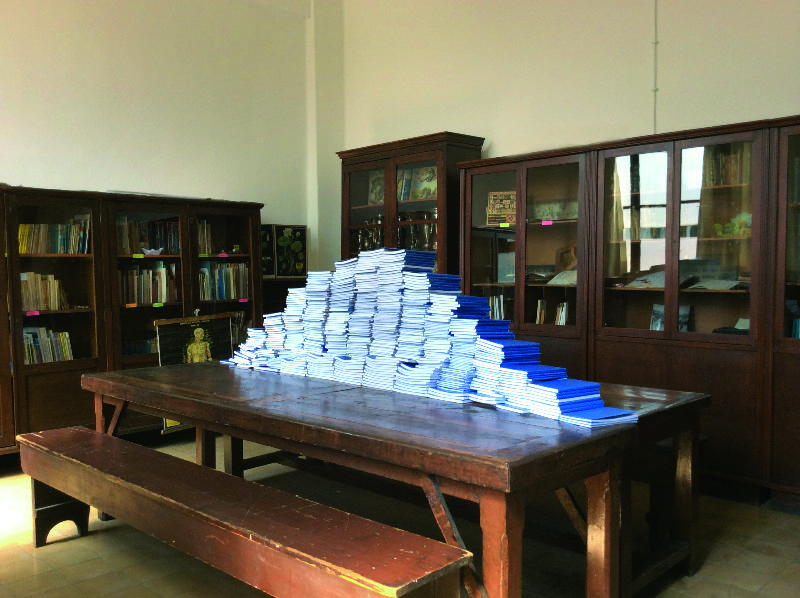In a linked pair of Perspectives posts, Billur Tansel of Open Dialogue Istanbul and Huma Kabakci of Open Space Istanbul offer complementary takes on their experiences of the dissolution of international borders and the concomitant rise of cultural hybridity.
As technological developments have made international communication and travel easier and cheaper, borders have become simultaneously existent and non-existent. While citizens of countries outside the European Union still face long waits for certain visas, others are subject to no such restrictions. Lunch in France, dinner in Switzerland . . . But even if people cannot travel physically, technology has made it much more efficient for them to interact at a distance. A lecturer can teach a class in New York from Istanbul, for example, while traveling curators and artists relocate frequently in search of alternative places to live and work, thereby sharing their cultures with others.
As boundaries are eroded in this way, communication increases and cultural platforms are more frequently and thoroughly combined. This has both advantages and disadvantages. In positive terms, the building of cultural bridges between nations helps all sides to grow and solve problems. Countries with closed boundaries tend to remain, by contrast, relatively underdeveloped. The fundamental truth of Aristotle’s famous characterization of man as “by nature a social animal” was demonstrated in the eighteenth century by the case of Victor, a 12-year-old boy discovered in a forest in Aveyron, France, who had seemingly been raised by wolves. The lengthy efforts made by medical student Jean Itard to civilize the boy were largely unsuccessful,1 proving incorrect Rousseau’s theory that if parents were to allow their child to develop naturally, without interference from instructors, he or she would blossom.
A current example of the benefits of communication and interaction is provided by the Ancient African Omo Tribe, which continues to lead a secluded life in Southern Ethiopia and Kenya. The tribe’s isolation has rendered their culture static, and their art has remained primarily, as in ancient times, a tool of self-defense—members of the indigenous tribe have been painting their bodies with pulverized minerals for millennia. Hans Silvester, who has photographed the tribe, writes: “Body painting, as practiced here in East Africa, the cradle of humanity, seems to me to represent a way of life that dates from prehistory as a means of survival.”2
The contemporary art scene in a given country might be considered a useful indicator of how well developed that country is in relation to others; countries that have reached a certain educational and cultural level can take part in cultural exchange more freely and naturally. However, the globalization of cultural platforms raises some concerns, including the erosion of regional cultures’ inherited individual traits. This process of alienation and dissolution is the primary focus of numerous artists, and of Open Space Istanbul and Open Dialogue Istanbul.
In September 2015, a moderator and five speakers took part in a conference called “Salty Thoughts” organized by Open Space Istanbul and Open Dialogue Istanbul as part of the Istanbul Biennial. The participants were from different disciplines and approached the theme of salt water from divergent perspectives. Marine biologist Rahmi Öğdül, marine archeologist Ufuk Kocabaş, and a diver and underwater photographer Ali Ethem Keskin were joined by Anjelika Akbar, a composer involved in studying the effects of music on water and a Turkish conceptual artist participating in the biennial. The moderator was Nevzat Sayın, an acclaimed architect and curator, and the speakers’ different perspectives and approaches to our underwater heritage proved appealing. Hera Büyüktaşçıyan, who also took part in the biennial with her project From the Island of the Day Before, explored the theme by attempting to make visible certain previously hidden ideas around time and mind. She proposed restaging readings that had taken place at the old Greek School, an institution that suspended its educational activities in 1988.
Open Dialogue Istanbul has a nomadic structure that enables it to engage effectively with Turkish and international artists and curators in this way, as well as with alternative exhibitions and educational programs that lack fixed boundaries. This structure was developed in parallel to the nomadic structure of the civilizations that have occupied this territory historically, and serves as a bridge between East and West. The aim remains to transcend geographic limitations and form a shared artistic and pedagogic sensibility.3 As Hans Ulrich Obrist states in Ways of Curating (2014): “There is a fundamental similarity to the act of curating, which at its most basi
c is simply about connecting cultures, bringing their elements into proximity with each other. The task of curating is to make junctions, to allow different elements to touch. You might describe it as the attempted pollination of culture, or a form of map making that opens new routes through a city, a people or a world.”

Hera Büyüktasciyan, From the Island of the Day Before, 2015. 688 covered notebooks and drawings. Installation view: Saltwater, Istanbul Biennial, September 2015. Photo: Courtesy Hera Büyüktasciyan
1. Tyson E. Lewis and Kahn, Richard, Education Out of Bounds, Reimagining Cultural Studies for a Posthuman Age (London: Palgrave Macmillan, 2010).
2. Hans Silvester, “The Ultimate Canvas,” Inspiration Green, http://www.inspirationgreen.com/tribes-of-the-omo-valley.html.
3. Umberto Eco, The Open Work (Cambridge, MA: Harvard University Press, 1989), p. 8.

























